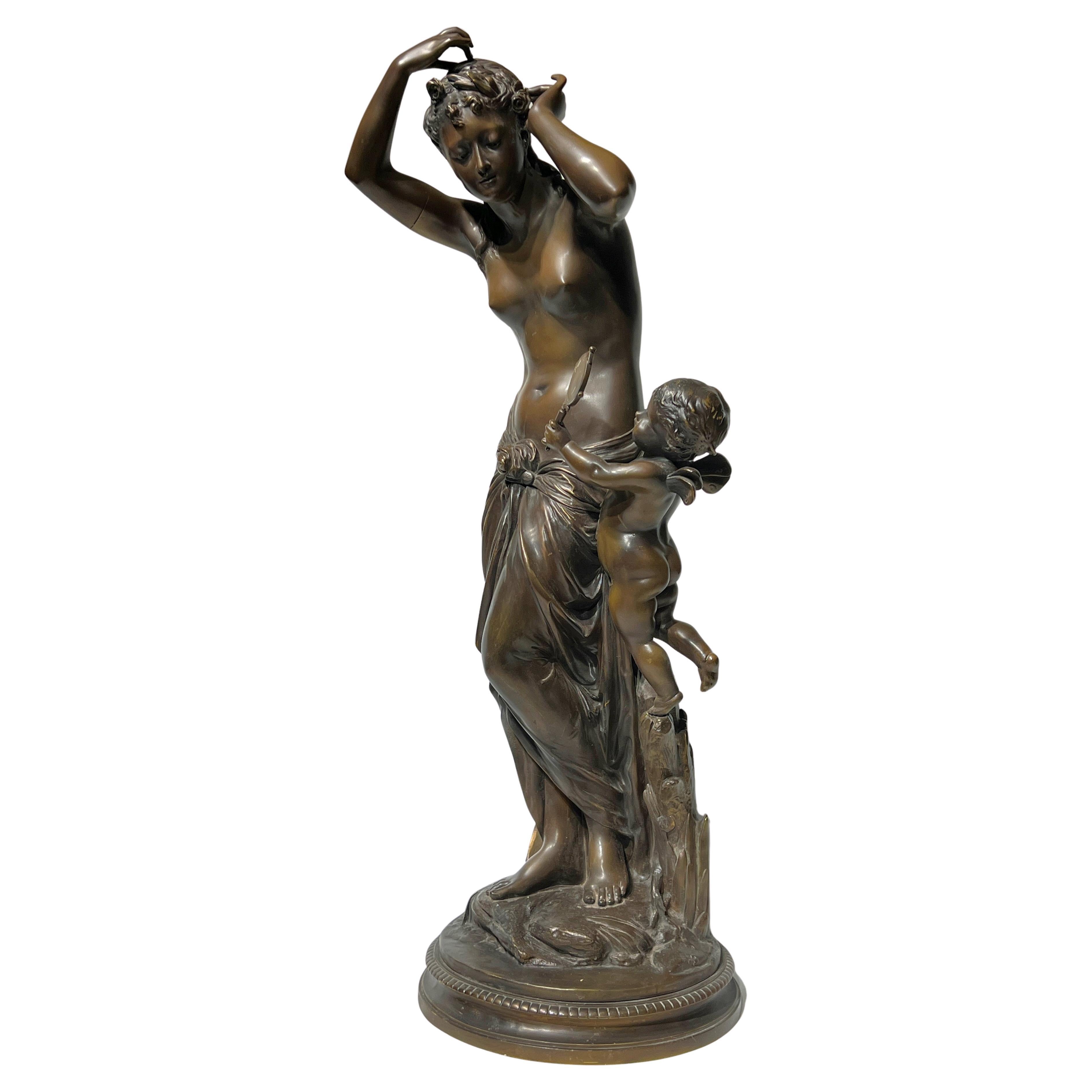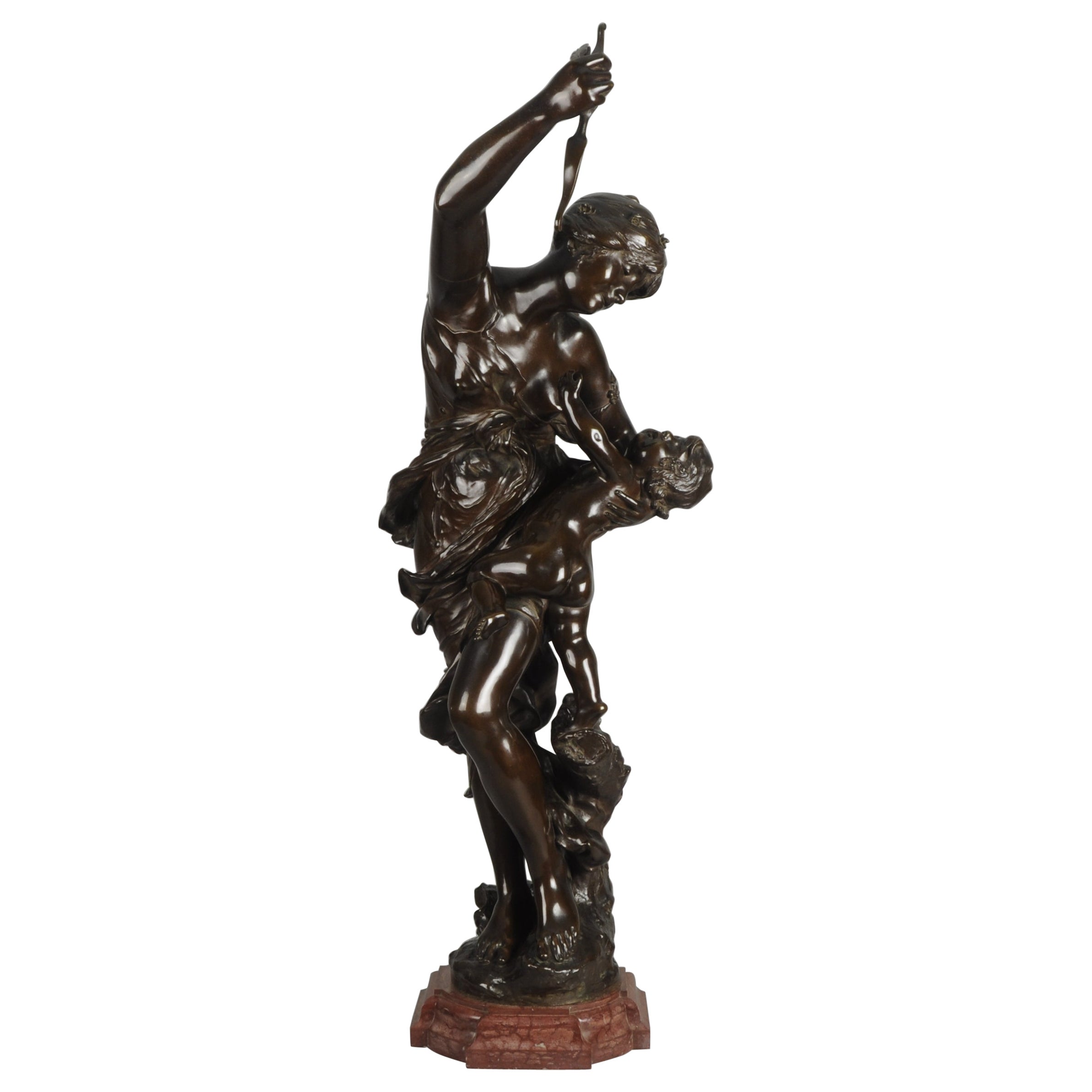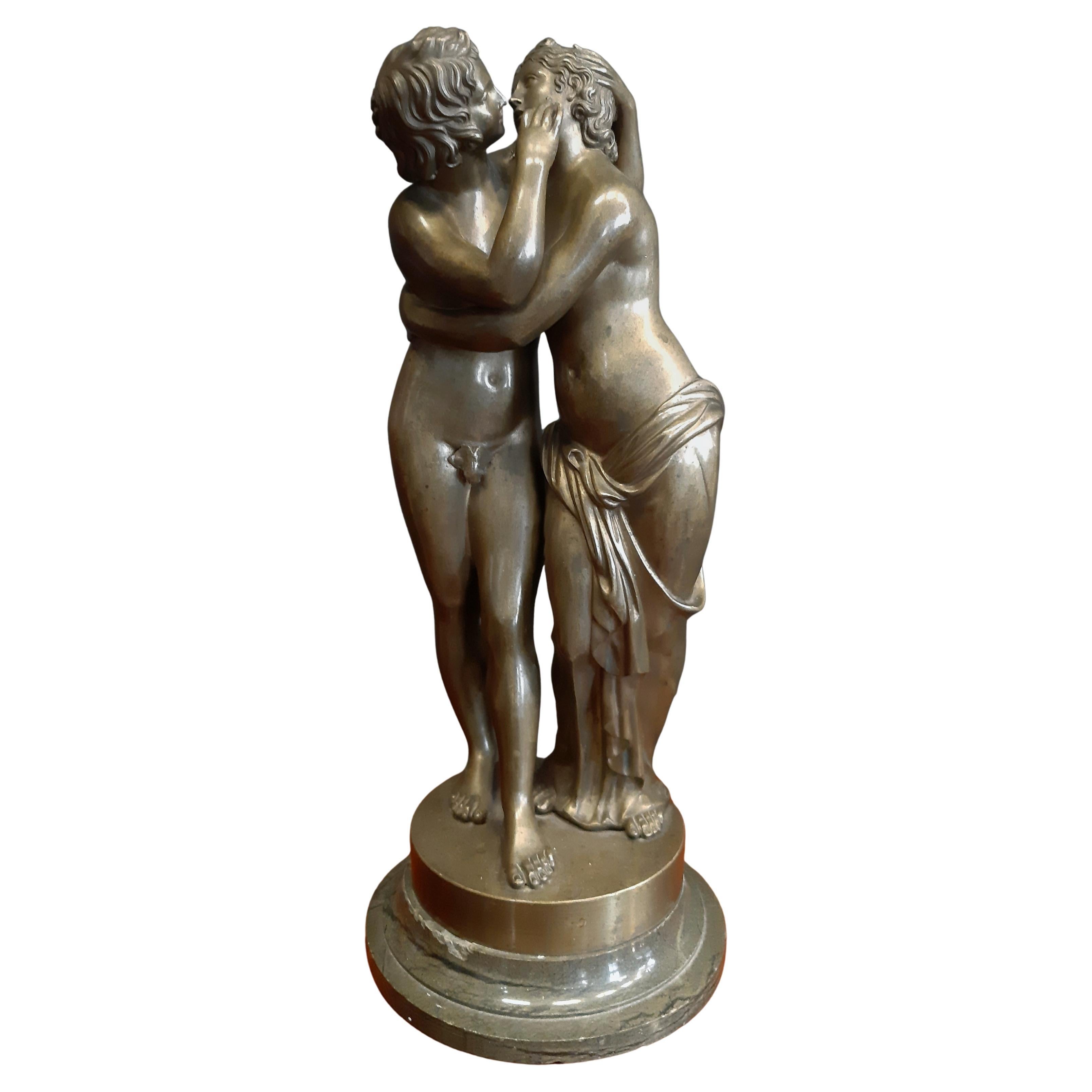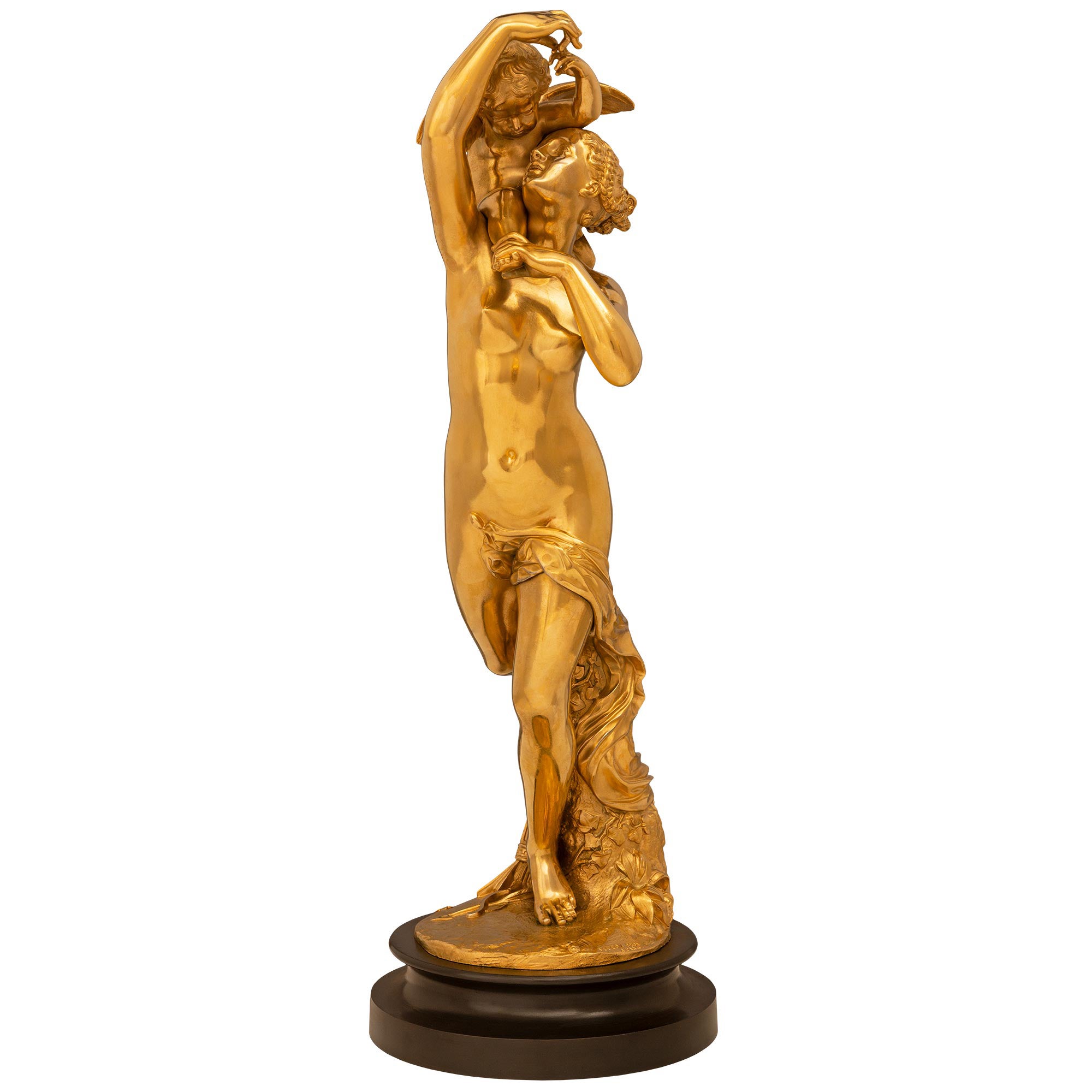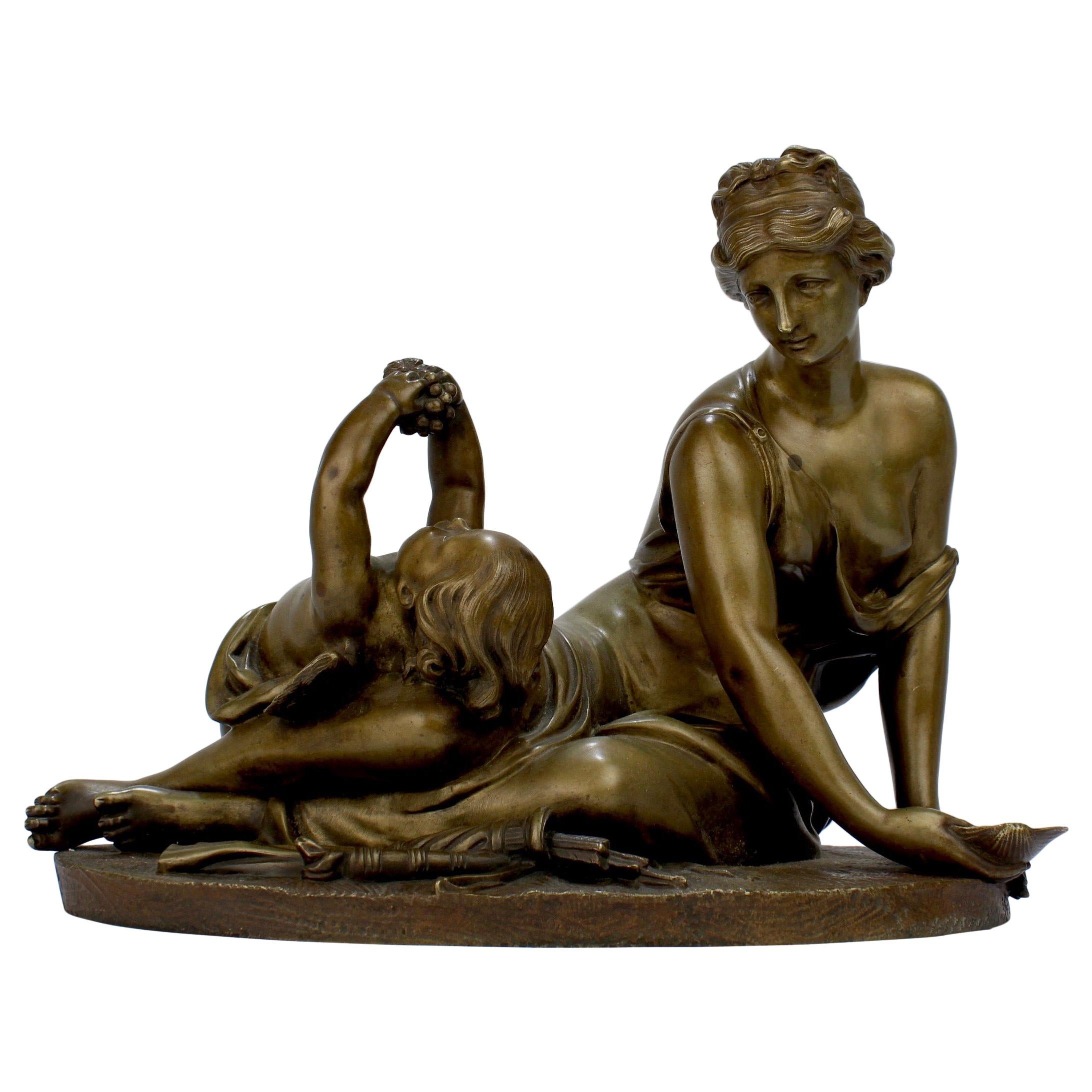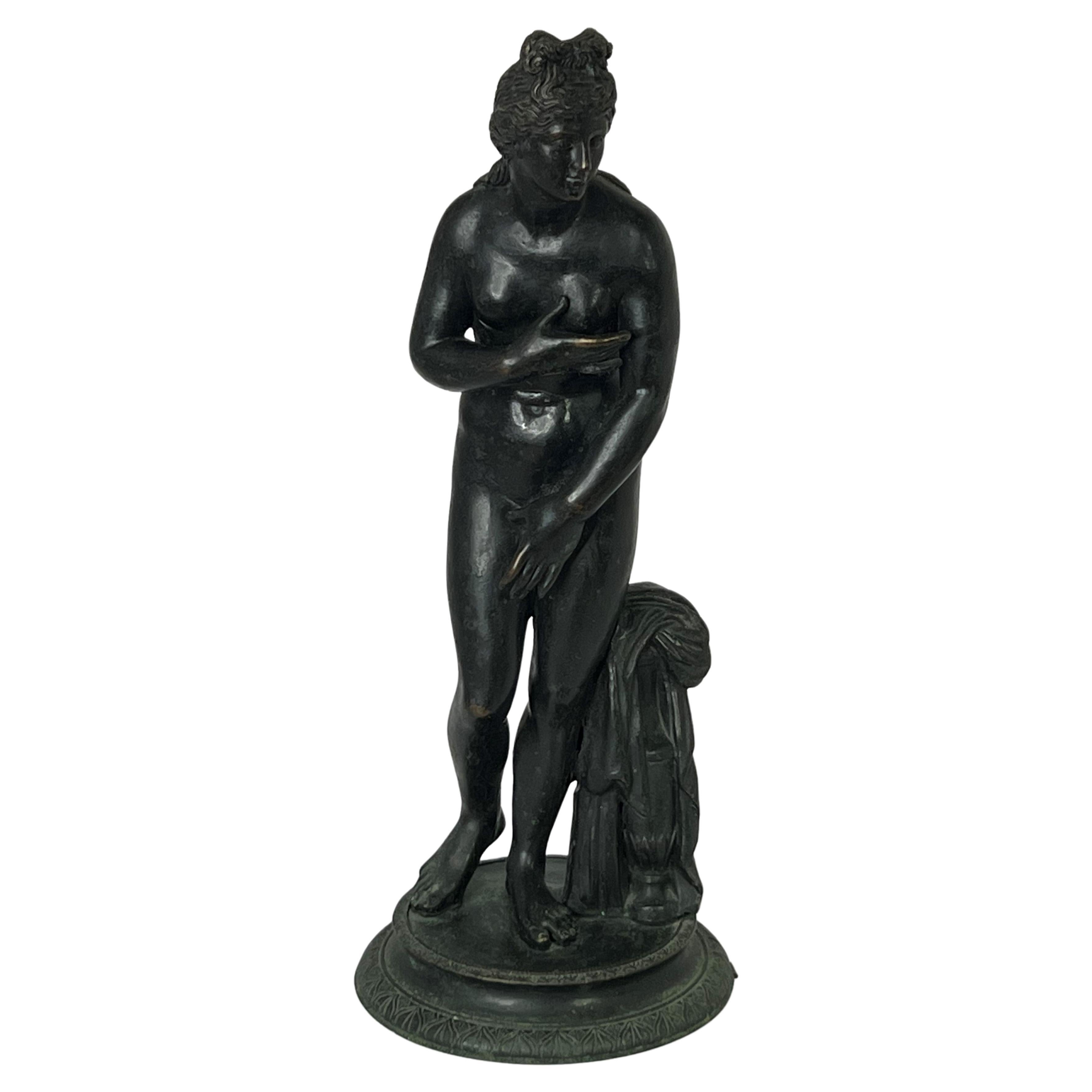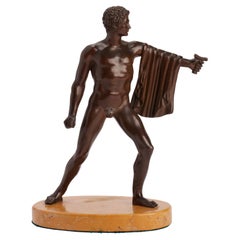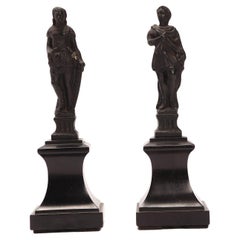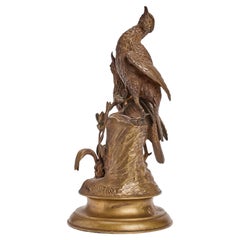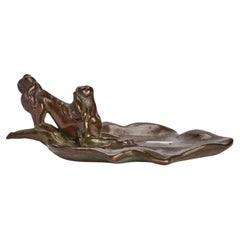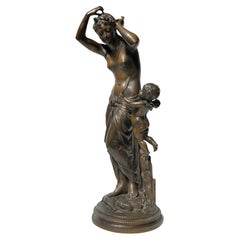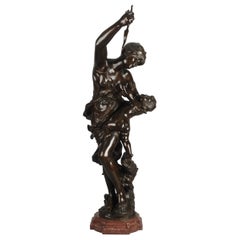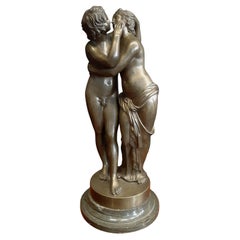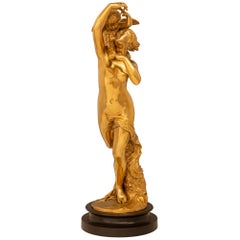Items Similar to Grand Tour Bronze Depicting Venus and Cupid, Rome, 1890
Video Loading
Want more images or videos?
Request additional images or videos from the seller
1 of 7
Grand Tour Bronze Depicting Venus and Cupid, Rome, 1890
$3,578.73
£2,645.80
€3,000
CA$4,922.49
A$5,471.66
CHF 2,868.13
MX$66,822.19
NOK 35,806.90
SEK 33,687.61
DKK 22,838.95
About the Item
Grand Tour Bronze sculture depicting Venus and Cupid, reluctant to take a bath. Placed over a cylindric pink marble and black Belgium marble plint base. Signed F.Seeboek and cast by G.Nisini. Rome, Italy, 1890.
- Dimensions:Height: 4.25 in (10.8 cm)Width: 1.75 in (4.45 cm)Depth: 4 in (10.16 cm)
- Materials and Techniques:
- Place of Origin:
- Period:
- Date of Manufacture:1890
- Condition:Wear consistent with age and use.
- Seller Location:Milan, IT
- Reference Number:1stDibs: LU917134047692
About the Seller
5.0
Vetted Professional Seller
Every seller passes strict standards for authenticity and reliability
Established in 1991
1stDibs seller since 2011
250 sales on 1stDibs
Typical response time: 2 hours
- ShippingRetrieving quote...Shipping from: Milan, Italy
- Return Policy
Authenticity Guarantee
In the unlikely event there’s an issue with an item’s authenticity, contact us within 1 year for a full refund. DetailsMoney-Back Guarantee
If your item is not as described, is damaged in transit, or does not arrive, contact us within 7 days for a full refund. Details24-Hour Cancellation
You have a 24-hour grace period in which to reconsider your purchase, with no questions asked.Vetted Professional Sellers
Our world-class sellers must adhere to strict standards for service and quality, maintaining the integrity of our listings.Price-Match Guarantee
If you find that a seller listed the same item for a lower price elsewhere, we’ll match it.Trusted Global Delivery
Our best-in-class carrier network provides specialized shipping options worldwide, including custom delivery.More From This Seller
View AllA neoclassic Grand Tour bronze depicting a warrior, Rome 1840.
Located in Milan, IT
Extremely refined neoclassical Grand Tour bronze sculpture, lost wax process, depicting a warrior Protesilao. Oval base made out of yellow marble from Siena. Rome, Italy 1st half od ...
Category
Antique Mid-19th Century Italian Figurative Sculptures
Materials
Marble, Bronze
Grand Tour object: a pair of metal sculptures on wooden bases, Italy 1870.
Located in Milan, IT
Italian Grand Tour Object: A pair of small sculptures in white metal and bronze finish, depicting a Roman legislator and a warrior, mounted on an ebony wood base. Venice, Italy circa...
Category
Antique Late 19th Century Italian Figurative Sculptures
Materials
Metal, Bronze
A gilt bronze sculpture of birds, signed Pautrot, France 1850.
Located in Milan, IT
A bronze gilt sculpture of birds are standing over a tree trunk decorated with leaves and flowers. Round plane base. Signed Pautrot, France circa 1850.
Category
Antique Mid-19th Century French Animal Sculptures
Materials
Bronze
Bronze Astray with a Pekingese Dog, Signed J. R. Hare, France, 1880
Located in Milan, IT
Bronze astray in shape of a leaf with bronze sculpture depicting a pekingese dog. Signed J. R. Hare. France circa 1880.
Category
Antique Late 19th Century French Animal Sculptures
Materials
Bronze
An anatomical model, France circa 1860.
Located in Milan, IT
An anatomical plaster sculpture, depicting a flayed man seated on a cubic base, in a position with the torso tilted and the arms holding the head. Reference to a work of the French s...
Category
Antique Mid-19th Century French Figurative Sculptures
Materials
Plaster
Boxwood carved seal depicting Hercules, Italy 18th century.
Located in Milan, IT
A Grand Tour carved boxwood seal depicting Hercules with a square iron matrix. Italy mid 18th century.
Category
Antique Mid-18th Century Italian Figurative Sculptures
Materials
Iron
You May Also Like
Venus and Cupid Bronze Sculpture After Jean Louis Gregoire (1840-1890)
By Jean Louis Grégoire
Located in New York, NY
Antique (late 19th century) bronze sculpture of Venus adoring herself in a mirror held by Cupid, after the original model by Jean Louis Gregoire (1840-1890), is finely cast with a w...
Category
Antique Late 19th Century French Neoclassical Figurative Sculptures
Materials
Bronze
19th Century Art Nouveau Bronze Entitled "Venus & Cupid" by Jean Sul-Abadie
By Jean Abadie
Located in London, GB
A very fine bronze study of Venus taking an arrow from Cupid her son, who at times would shoot his arrows without meaning or reason into the hearts of men, igniting their desire. Exhibiting excellent rich brown patina and good detail, signed Sul Abadie and stamped.
Additional information
Height: 93 cm
Condition: excellent condition
Circa: 1885
Materials: bronze & marble
SKU: 4979
ABOUT
Jean Sul-Abadie
Jean Sul-Abadie (Born 1850 ~ Died 15th April 1890) was a French artist, a pupil of Jouffroy and Falguière. Specialising in bronze sculpting in the Art Nouveau style. He made his Salon debut in 1872.
Cupid & Venus
Different tales exist about the origin of Venus and Cupid. Some say that Venus, the goddess of love and beauty, had a love affair with Mars, the god of war. Out of this relationship, Cupid was born. In the following painting you see Venus with Mars, who is being disarmed by Cupid.
Cupid has attributes from both of his parents. Like his mother he is considered to be the god of love, or more precisely, the god of falling in love. He is portrayed as an innocent little child with bow and arrows. He shoots arrows to the heart, and awakening a love that you’re powerless to resist.
In classical mythology, Cupid (Latin Cupido, meaning “desire”) is the god of desire, erotic love, attraction and affection. He is often portrayed as the son of the love goddess Venus and the war god Mars, and is known in Latin also as Amor (“Love”). His Greek counterpart is Eros.
Although Eros is in Classical Greek art as a slender winged youth, during the Hellenistic period, he was increasingly portrayed as a chubby boy. During this time, his iconography acquired the bow and arrow that represent his source of power: a person, or even a deity, who is shot by Cupid’s arrow is filled with uncontrollable desire. In myths, Cupid is a minor character who serves mostly to set the plot in motion. He is a main character only in the tale of Cupid and Psyche, when wounded by his own weapons he experiences the ordeal of love. Although other extended stories are not told about him, his tradition is rich in poetic themes and visual scenarios, such as “Love conquers all” and the retaliatory punishment or torture of Cupid.
In art, Cupid often appears in multiples as the Amores, or amoriniin the later terminology of art history, the equivalent of the Greek erotes. Cupids are a frequent motif of both Roman art and later Western art of the classical tradition. In the 15th century, the iconography of Cupid starts to become indistinguishable from the putto.
Cupid continued to be a popular figure in the Middle Ages, when under Christian influence he often had a dual nature as Heavenly and Earthly love. In the Renaissance, a renewed interest in classical philosophy endowed him with complex allegorical meanings. In contemporary popular culture, Cupid is shown drawing his bow to inspire romantic love, often as an icon of Valentine’s Day.
Venus is the Roman goddess whose functions encompassed love, beauty, sex, fertility, prosperity, victory, and desire. In Roman mythology, she was the mother of the Roman people through her son, Aeneas, who survived the fall of Troy...
Category
Antique Late 19th Century French Art Nouveau Figurative Sculptures
Materials
Breccia Marble, Bronze
19th Century Bronze Sculpture of Cupid and Psyche
Located in Dresden, DE
Romantic 19th-Century bronze scultprue of Cupid and Psyche passionately engaged in a kiss...
Cupid and Psyche
Bronze
Height: 36.5 cm
Diameter: 15 cm
Category
Antique 19th Century Figurative Sculptures
Materials
Bronze
French 19th Century Bronze & Ormolu Statue Allegorie De L'amour Maternel
Located in West Palm Beach, FL
A wonderful and finely detailed French 19th century Ormolu and Patinated Bronze statue titled Allegorie de L'amour Maternel, signed Fraikin and Vittoz. The stunning statue's title me...
Category
Antique 19th Century French Figurative Sculptures
Materials
Bronze, Ormolu
Antique 19th Century Gilt French Bronze of Venus & Cupid after Carrier-Belleuse
By Albert-Ernest Carrier-Belleuse
Located in Philadelphia, PA
A wonderful bronze of a seated Venus and Cupid.
Modeled with a recumbent Venus attended by Cupid on an oval plinth in the manner of Albert-Ernest Carrier-Belleuse.
With finely...
Category
Antique Late 19th Century French Beaux Arts Figurative Sculptures
Materials
Bronze
Capitoline Venus Grand Tour Mid 19th century bronze
By Praxiteles 1
Located in Mobile, AL
This grand tour bronze sculpture depicts the version of Venus so important to the history of art and literature in the U.S. that the original was temporarily loaned to the National Gallery of Art from the Capital Museums in Rome in 2011. Mark Twain visited Rome and upon his return home in 1867 he published "The Capitoline Venus" and he described the work as the “most illustrious work of ancient art the world can boast of". (with credit to the National Gallery of Art catalog...
Category
Antique Mid-19th Century European Grand Tour Figurative Sculptures
Materials
Bronze
More Ways To Browse
Antique Pink Marble
Venus And Cupid
19th Century Italian Grand Tour Bronze Sculpture
Marble Bath
Italian Venus Bronze Sculpture
Grand Tour Venus
Grand Tour Bath
Marble Bath Grand Tour
1920s Terracotta
Art Deco Gloves
Hand-Carved Wood Figures
Legends Bronze
Majolica Figurals
Majolica Figure
A Carrier Bronze
Alabaster Sculpture Modern
Bronze Erotic Sculpture
Enamelled Figurine
